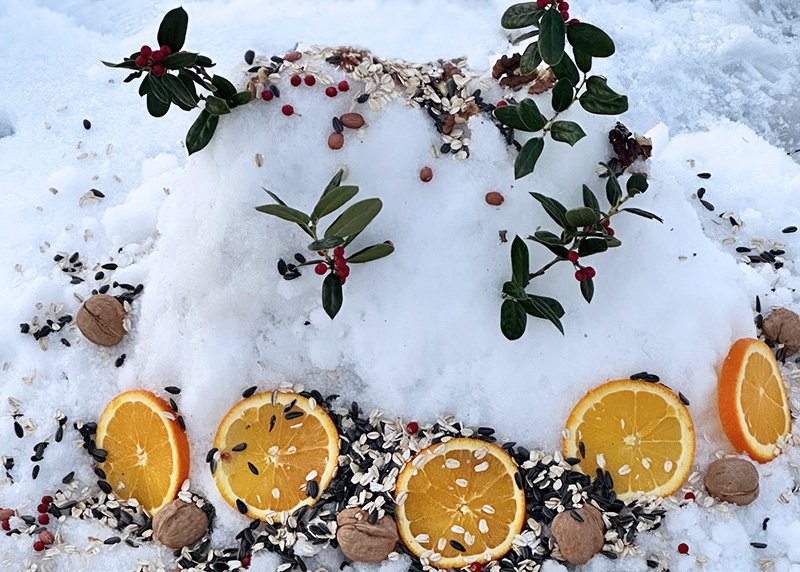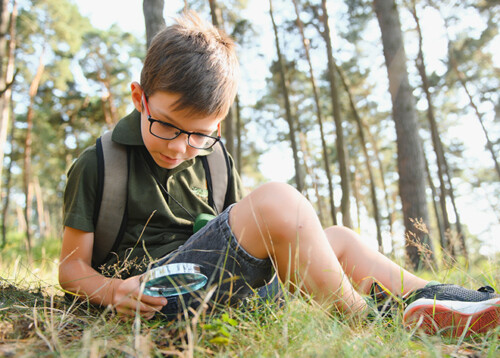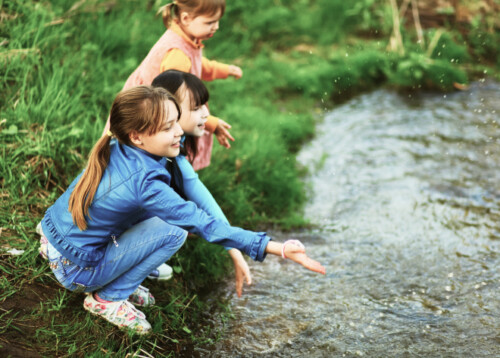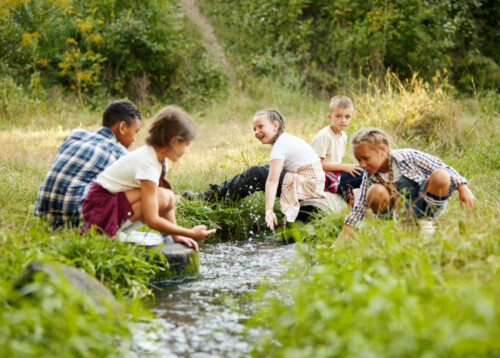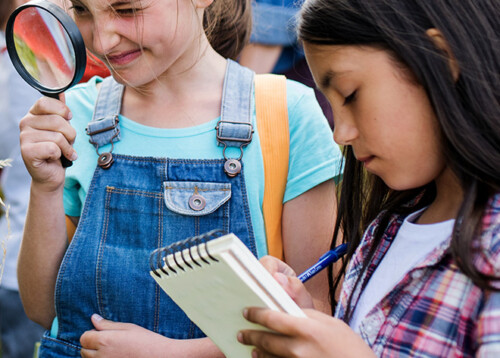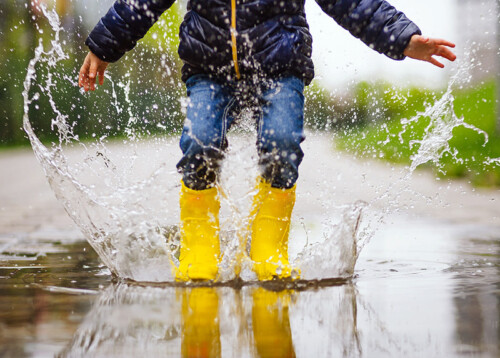Children love feeding birds in wintertime – so let’s spark their creativity! How about a snowy seed cake? Or a snow seed train? Build connection to local wildlife with this winter outdoor play activity that combines art, science, and proven winter fun. Let’s learn the difference between migratory and resident birds. What birds will visit the snowy feeders?
Objectives
| Introduce concepts migratory birds and resident birds. |
| Spark creativity with a design task. |
| Develop teamwork skills through winter play. |
| Tally and reflect observations. |
Materials Needed
• Fresh snow!
• Birdseeds (sunflower seeds, millet, cracked corn, etc.)
• Nuts (unsalted and unprocessed, like walnuts or almonds)
• Fresh fruit slices (e.g., oranges or apples)
• Evergreen sprigs or holly branches for decoration
• Ziplock bags or baskets for students to carry their supplies
Grade Levels
Pre-K, Kindergarten, 1st grade, 2nd grade
Details
Step 1: Classroom Orientation & Engagement
What are some differences between migratory and resident birds?
Introduce students to common birds in your region by showing pictures and identifying what birds students already know. Discuss the differences between migratory and resident birds. Does this bird migrate or stay in the same region year-round?
We recommend the Winter Birds, Why are birds able to stay in the winter and some leave? How can you help them? video to introduce the topic.
Let’s compare migratory and resident birds in a Venn diagram.
Elementary school students may research and compare migratory and residential birds and use a Venn diagram to record the differences between birds. Can you name any migratory birds in your region? How about resident birds?
| Venn Diagram template (PDF) |
| Answer Key (please check the answers to reflect your local region) |
What do birds eat in winter?
Inspire young students with a story. For instance, Snow Birds by Kirsten Hall is a rhyming read-aloud for young students. After reading the book, discuss with the students: Why do birds need extra help finding food in winter? Which birds prefer sunflower seeds and peanuts? Do you think birds like fruit and berries? Why do some birds prefer tiny seeds?
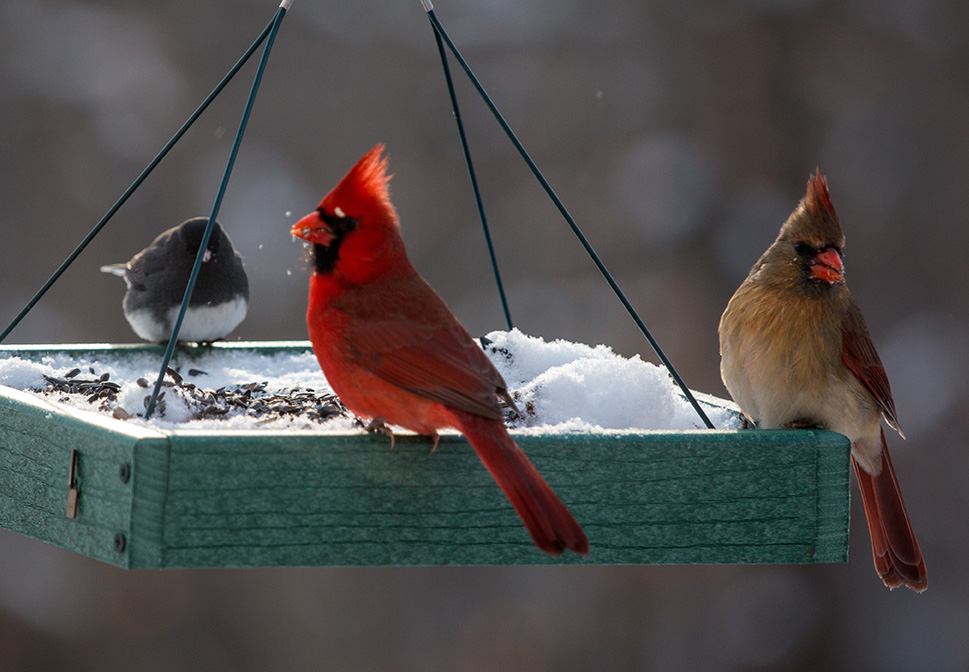
Step 2: Winter Exploration to Build Snow Cakes for Birds
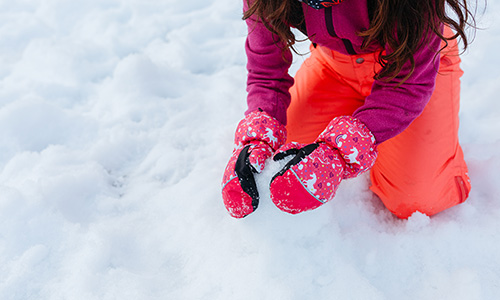
Let’s go out and make snow cakes for birds! Take students outdoors for a snow cake seed-building activity. Students may gather supplies in teams and brainstorm design ideas for their snow seed cakes. Symmetry in designs can be discussed with older students.
When possible, choose a location for students to build the snow cakes near classroom windows or where students can safely observe the wildlife from a distance.
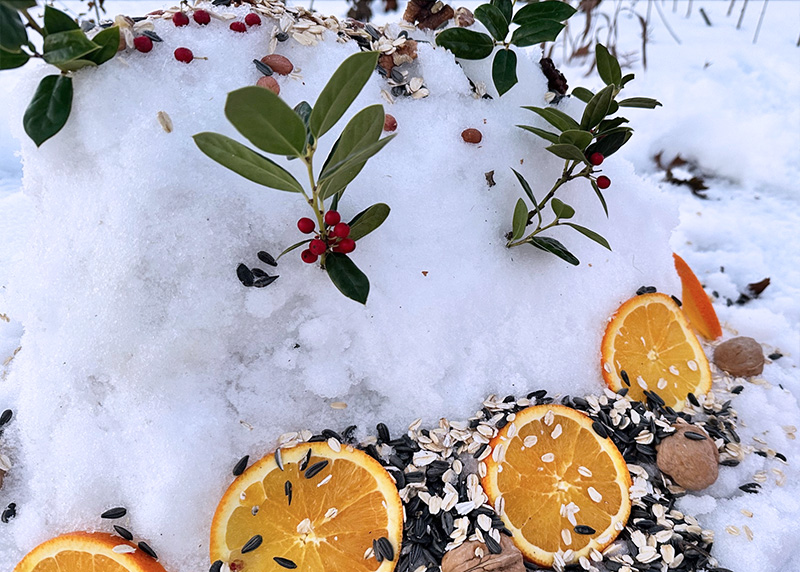
Students may use their hands or available tools and molds to create the cakes. After the snow cakes (or other shapes) are formed, students can decorate them with their chosen materials and seeds – following their symmetry ideas and designs or simply improvising. Allow students to explore and pick up materials, too! Each team or group may present their cakes and describe the types of birds they envision visiting the snow cake.

Step 3: Reflections in the Classroom
Students may create a simple chart and tally the birds they see in the feeding area. What birds are the most frequent visitors? What is your favorite bird? Should we add more seeds to the feeders? What else can we do for the birds?
Resources
Migratory vs. Resident Birds: What Is The Difference? Link
| Venn Diagram template (PDF) |
| Answer Key (please check the answers to reflect your local region) |
Snow cake design ideas:
| Let Them Eat Cake — Snow Cake That Is: https://www.willyswilderness.org/post/let-them-eat-cake-snow-cake-that-is |
| Snow cake for forest animals: https://youtu.be/BWw2EcmRINQ?si=JoeR2z8Pby_l0DXG |

